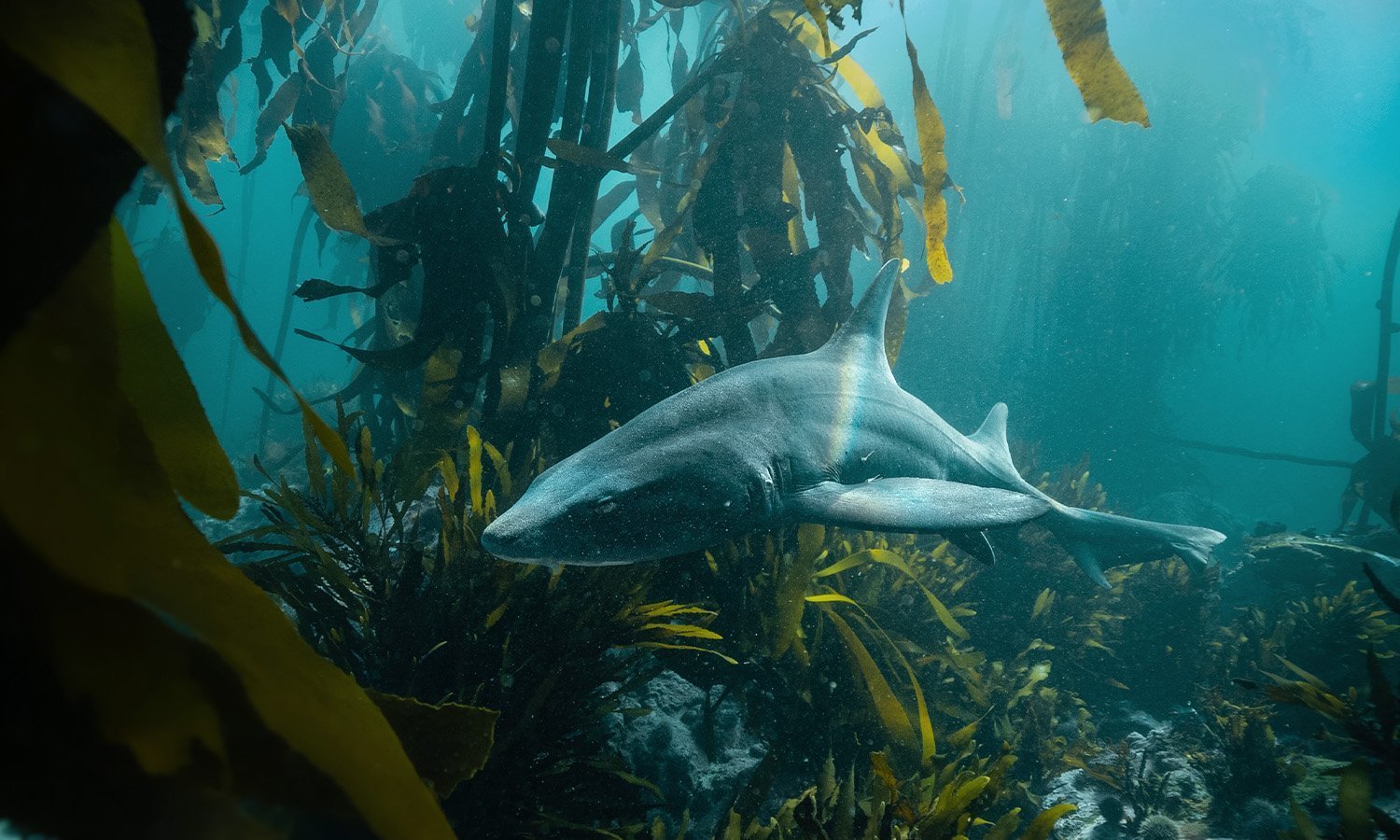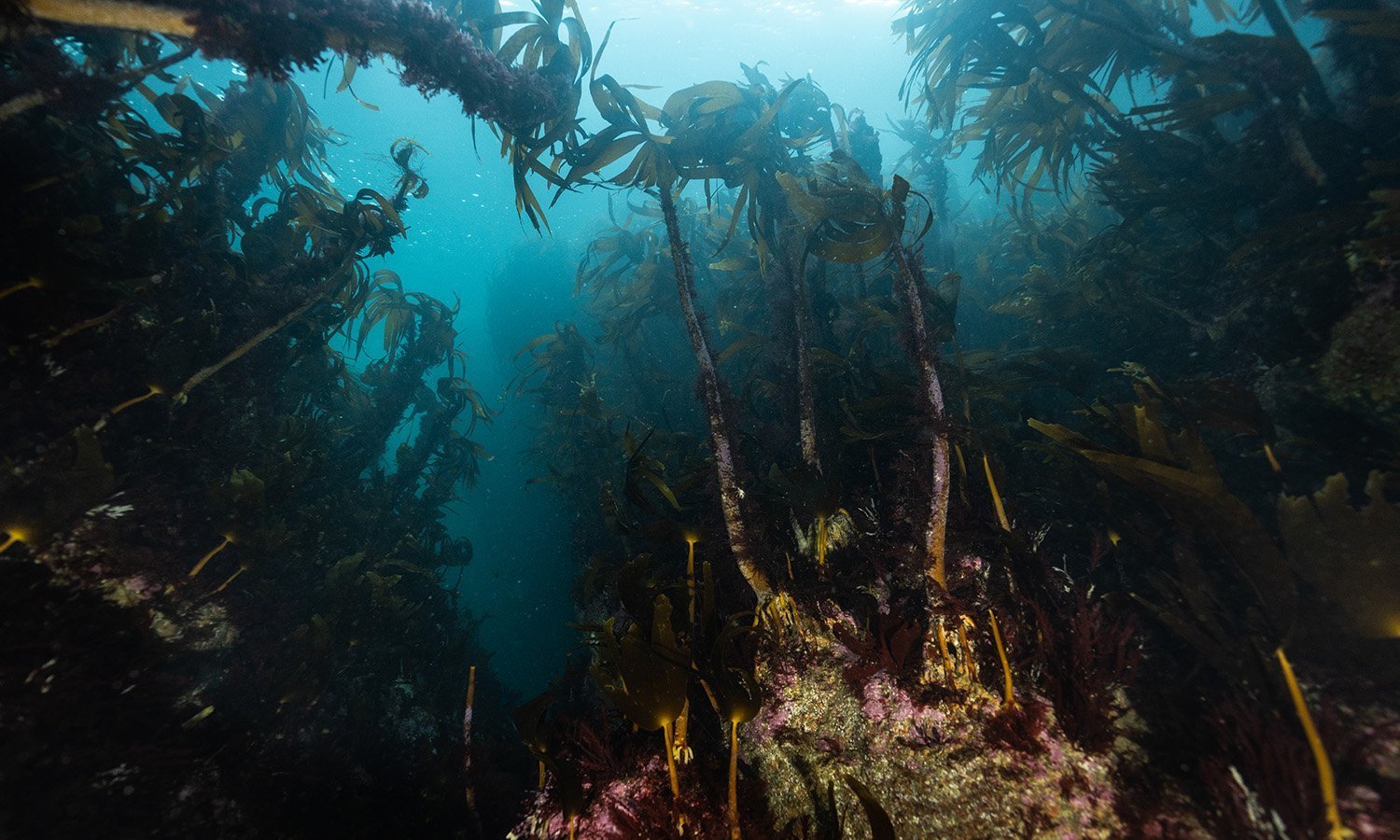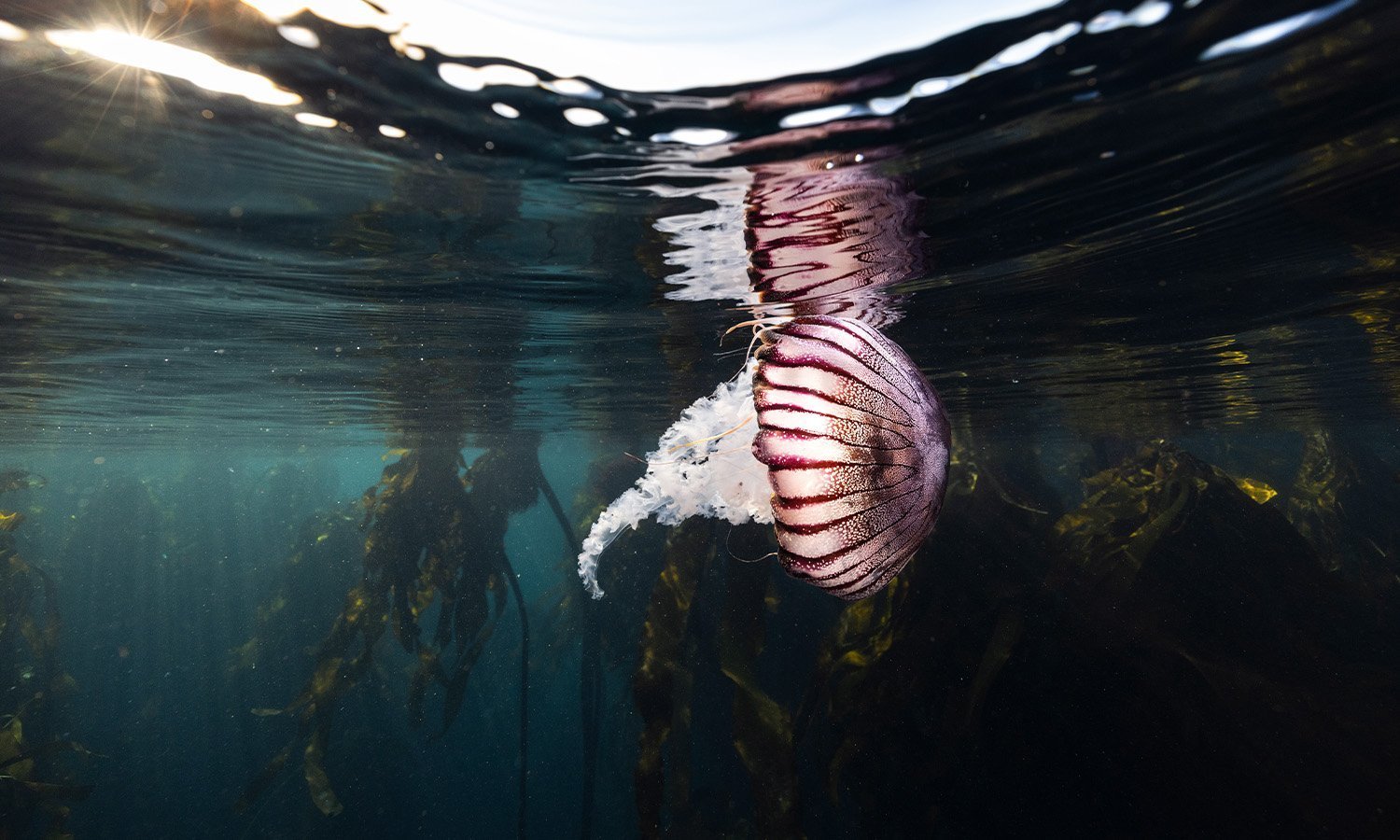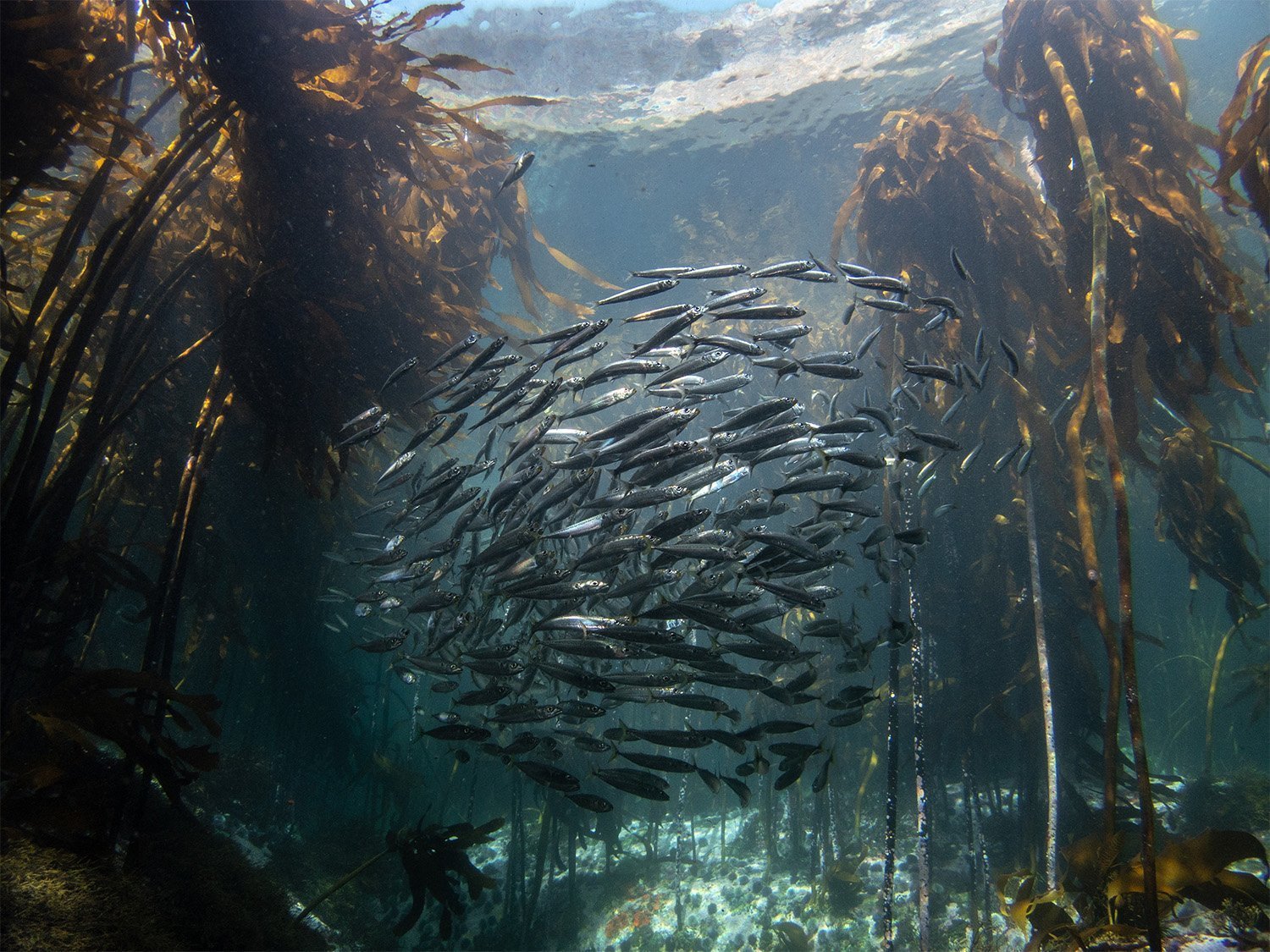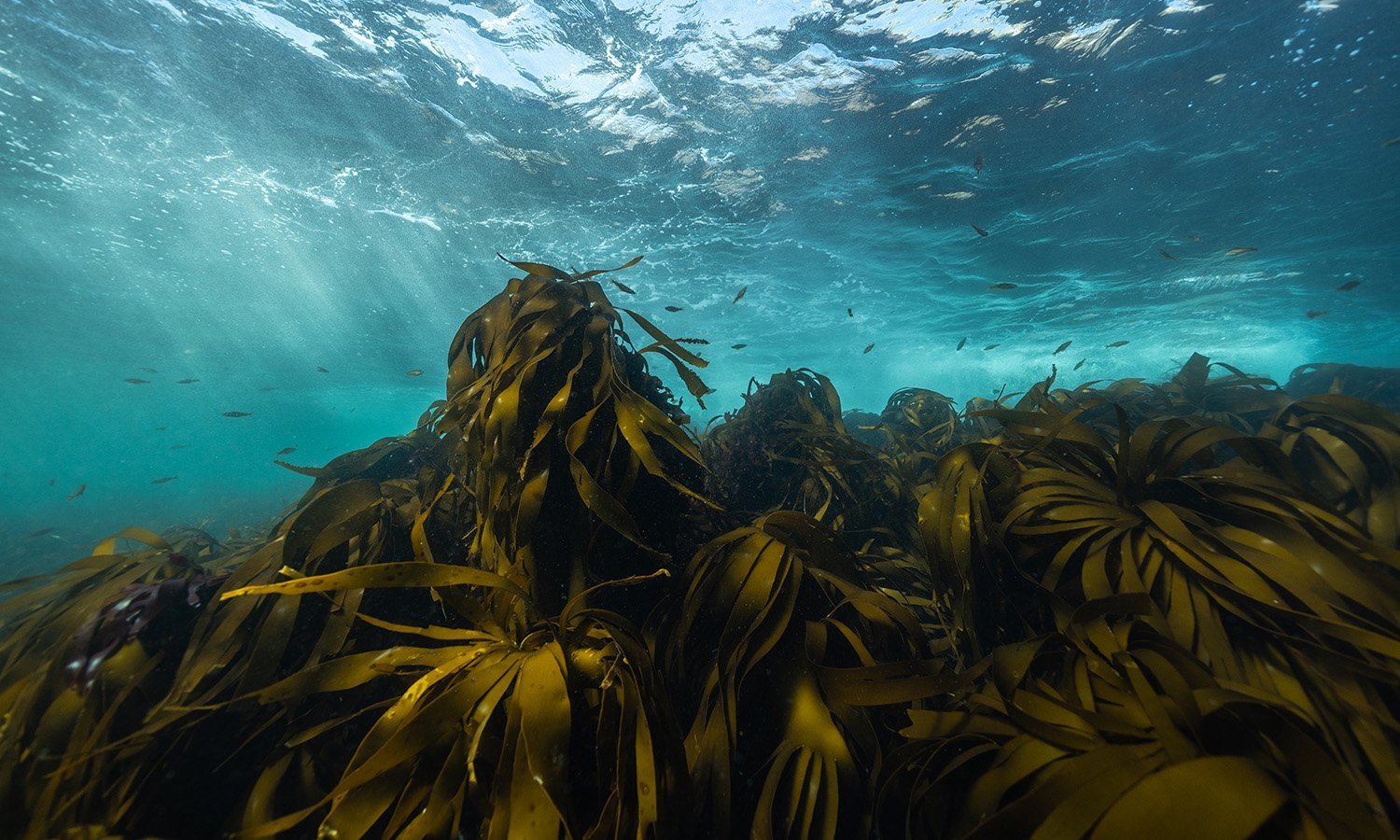IN FOCUS: FAINE LOUBSER
25-year-old Faine Loubser was born in Paarl, a small town in the Western Province of South Africa. She grew up on farms there for the first few years of her life before moving with her parents to Cape Town. It was here that she fell in love with the water, the city’s coastlines teeming with life, and The Great African Seaforest – an expanse of kelp stretching over 1000km all the way to Namibia.
Faine – who worked on Craig Foster’s seminal Oscar-winning documentary My Octopus Teacher and is now exploring with Parley through our Forests of the Sea initiative – is an incredible marine photographer, and the documentation of her excursions into Cape Town’s kelp forests that she posts on her Instagram offers a glimpse into the wonders of these ancient habitats.
She recently returned from the Shetland Islands, the northernmost part of the United Kingdom, where she was on a Talisker x Parley mission diving into kelp forests as part of our aim to rewild our seas, preserving and protecting 100 million square meters of global marine ecosystems by 2023. Faine’s work from the trip takes us through Scotland’s kelp forests, gets up close with crabs, urchins and starfish and weaves through ecological hideaways in the region’s waters.
For our latest In Focus interview, we caught up with Faine to discuss her journey as a photographer, being scared when you’re out at sea, and the magic of kelp forests.
Q & A
You've been photographing kelp forests for some time now - what is it about these environments that you find so enchanting?
As a child, I grew up on books like the Enchanted Wood and so forests always held a kind of magical allure. I loved and craved the feeling of being in a forest. At the same time, I’ve also always had a passion for the sea. Being near it, in it, or on it fills me with a sense of joy. And so, the combination of this ocean space with an underwater forest was just too much to resist for my inner child. It is the epitome of real-life magic. Growing up on the coast of Cape Town has given me special privilege and access to one of the world’s most beautiful kelp forest ecosystems.
Kelp forests are vital ecosystems, but they're underappreciated by humanity. Tell us about your work getting the message about kelp forests out to the world.
I started my work in kelp forests here in South Africa with a local organization called Sea Change Project. We recognized that in Cape Town, a city of over 4 million people, so few people had a sense of the incredible ecosystem they had right on their doorstep. We believed this was largely due to a lack of identity and media awareness, and so, united by our common media skills — be it writing, photography, filmmaking etc — we created books, films and exhibitions while embedding the name “The Great African Seaforest” into this media. This gained huge traction in just a few years with it being named a new natural world wonder in 2021.
Now, my work is focused more globally on kelp forest ecosystems which as a whole still remain largely under-appreciated. Called “Forests of the Sea”, this project is a collaborative effort of Parley, Mission Blue and individuals / smaller organizations all around the world to increase their protection, scientific research and media presence.
As a photographer, what did you learn from working on My Octopus Teacher
Patience… In a very fast moving world we are often expected to deliver content in a very short turnaround. But My Octopus Teacher and the work that Craig Foster, Pippa Ehrlich and others put into this film came from someplace else, one not burdened by this quick turnaround. It was a labor of love that took ten years of Craig diving and observing the kelp forests virtually every single day, to eventually form this relationship with this octopus, and then to edit all this footage over four years. For me, that is the great learning. Nature doesn’t necessarily operate on quick turnarounds. You need to observe it with patience in order to grow an intimacy with it. This is what I want to bring into all of my work, insofar as it is possible.
Kelp forests are shadowy places, where the light creeps in where it can. Are you ever scared when you're out taking photos in the water?
When the light is out in full strength, it’s the most epic place ever. When the light is not out, it definitely gets a dark and eerie feeling. I have had moments where I have been scared. But this has more been as a result of being very far out at sea in sharky territory. The kelp itself doesn’t bother me, in fact if anything, it makes me feel safer. Sharks, particularly the really big ones like white sharks, tend to avoid the dense patches of kelp, so it acts as a kind of haven for many smaller animals — including me.
What's your favorite photograph that you've ever taken, and why?
Probably this image of a seven gill cow shark. This particular day was gray, there was no light, and often it’s quite tricky to take photos in the kelp when it’s like this. Everything flattens and it becomes hard to create depth. But, the scale of the seven gill cow shark, its crazy prehistoric-looking features, and the more sparse kelp found in the deeper waters all pulled through to create what I believe is a good image. It’s also an image that holds a lot of nostalgia. These seven gill cow sharks were a treasured but familiar sight along the coast of the Cape Peninsula, but 3 years ago they vanished from their usual territory. This happened due to the arrival of the shark-hunting orcas. These orcas have totally reordered the ecosystem, chasing the white sharks away and creating gaps in environments which were previously dominated by the white sharks. Seal Island, the hunting ground of the white shark seems to now be one of the new areas inhabited by the seven gills. But, being far offshore, it’s hard to access.
How are Cape Town's marine ecosystems changing?
At the moment, the health of the kelp forest seems fine. In fact, it’s one of the few kelp forests around the world which is remaining stable and actually expanding. This is due to the fact that our waters are getting colder as opposed to warmer. Kelp likes a cool sea. In a world that is rapidly warming, it may seem strange, but these regional differences do happen and are in fact driven by the global trend of warming. But, like most ecosystems around the world, biodiversity is being lost. Our reef fish, rock lobster and abalone populations are smashed due to overfishing and poaching. This is for me, incredibly sad.
Having recently spent time photographing kelp forests in Scotland – what differences did you notice between that environment and the Great African Seaforest?
Firstly, I never expected Scotland’s kelp forests to be as epic. I knew their kelp forests were dominated by different species of kelp which are all far smaller than our own, growing only to a maximum height of around two meters — where ours can be up to 20 meters. So I went in thinking it would be this miniature forest, too small to really access or dive through. But, what I found instead was that the bathymetry totally shaped this environment into one that was as cathedral-like and as impressive as South Africa. With huge gullies and fascinating geological features, the relatively small kelp still held a grand feeling. And within this kelp were many beautiful, flamboyant and colorful animals and seaweeds, much like South Africa. That said, the impact of many hundreds more years of overfishing and hunting has made a noticeable impact on the environment. There are very few fish left, and the mammals are extremely skittish unlike ours which seem to be less burdened by many hundreds of years of ancestral trauma.
You're experienced now, but what advice would you give to someone who wanted to start taking photos of kelp forests?
When you start, it’s not about what camera you use. A GoPro or other smaller camera is a perfect way to get into this ecosystem and into learning about how to film and photograph this environment. The most important thing though is time. Spend as much time and in as many different conditions as you can safely do so in the forest. This way you’ll get to know its many different characters and ways. And the more time you spend in it, the luckier you get with animals, light and visibility.
“Nature doesn’t necessarily operate on quick turnarounds. You need to observe it with patience in order to grow an intimacy with it. This is what I want to bring into all of my work, insofar as it is possible.”
Faine Loubser


